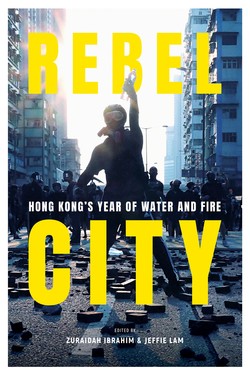Читать книгу Rebel City - South China Morning Post Team - Страница 43
На сайте Литреса книга снята с продажи.
Broad support
ОглавлениеWhile Hong Kong has long had a tradition of peaceful protests, the turn to violence in 2019 should not have come as a surprise, said political scientist Cheng. The Mong Kok riot three years earlier provided a preview. Pro-independence activist Edward Leung Tin-kei and his associates had gone to the shopping area on Lunar New Year to avenge what they saw as the poor treatment of unlicensed hawkers. For hours, they clashed with police, throwing bricks and setting fires, even setting police vehicles ablaze.
Activists were weary of “old and useless” peaceful tactics, Cheng said, and decided on actions that would exact a higher cost on the authorities. “They had prepared for it since 2016 and it is not something new to the frontliners today.”
At the time, the scenes of chaos in Mong Kok shocked Hongkongers. In 2019, after a few clashes and with an emerging narrative of police violence, many became inured to the sight of physical fights between the two sides, the mess and mayhem and the clouds of tear gas fired. One argument protesters used to justify their violence was that police were using disproportionate force to take on ill-equipped young people. Moreover, they argued, while the protesters caused minor inconvenience, police were choking innocent people with their tear gas. Broad swathes of society – the wo lei fei and also middle-class bystanders across the generations – sided with the protesters, becoming the political vitamin sustaining the movement.
Engineer George Chu, 40, was among them. “Police officers, with public power, have been using stronger weapons so it is only reasonable for protesters to escalate their actions,” Chu said at a Kennedy Town rally on August 4, an event that, again, ended in chaos and tear gas.
CC recalled how some middle-aged residents had cheered for him and his comrades when they were fighting on the streets. He was even rescued once by an elderly man who tipped him off to head to a nearby shelter when he was dodging riot police along Hillwood Road in Tsim Sha Tsui on November 18. “The support from these middle-aged people stemmed from their sympathy toward the youngsters who had gambled away their futures,” he said. “They might not care about democracy at all.”
A joint study by Cheng, Lingnan University political scientist Samson Yuen Wai-hei and Chinese University (CUHK) journalism professor Francis Lee Lap-fung confirmed that supporters had no qualms accepting the protesters’ violence. An analysis of 18,000 questionnaires collected at protest sites from June 2019 to early January 2020 found that more than 90 per cent of respondents strongly agreed that “the peaceful faction and militant faction are in the same boat.”
The study also found that supporters who were most tolerant of radical actions were young people born after the 1980s and those now in their 60s. “The inverted U-shape suggested older people who are in a comfortable position now had a sense of guilt toward the youngsters who sacrificed themselves,” Cheng said.
A multiple-round telephone survey conducted by CUHK suggested that fewer Hongkongers insisted on peaceful methods as the protests dragged on. In mid-June, almost 83 per cent of respondents agreed the protests must stay non-violent, but that share gradually slid to 71.6 per cent in August and to 69.4 per cent a month later.
October 1 marked another turning point. As protesters declared the 70th anniversary of the founding of the People’s Republic of China a day for mourning, clashes with police broke out in several places early on. Radicals embarked on a spree of violence, lighting fires, hurling bricks and petrol bombs and smashing mainland-linked businesses. Amid the chaos, hard-core frontliners cornered and assaulted outnumbered police officers with rods in Tsuen Wan. One of the radicals, who was battering an officer, was hit in the chest with a live round. The high school student survived but protesters were outraged by the shooting of a teenager and vowed that a “debt of blood” had to be paid.
Among those who became radicalized was a transport worker who used to keep away from the jung mou back in June. But as the clashes intensified, the 32-year-old changed his stance. He raised money online and began supplying gas masks and goggles to frontliners. At the height of some of the most violent clashes, including the siege of CUHK in November, the transport worker was in the thick of the action, ferrying supplies. “Many people changed, myself included,” he said. “I stopped caring about what the protesters did. I would have been happy to see police officers injured. I didn’t care about what happened to them.”
CUHK political scientist Ma Ngok said Hongkongers’ anger toward police and their acceptance of road blockades and vandalism snowballed as the movement rolled on. “They no longer think it’s reasonable to blindly obey the law when there is no punishment for the officers’ wrongdoings,” he said.
